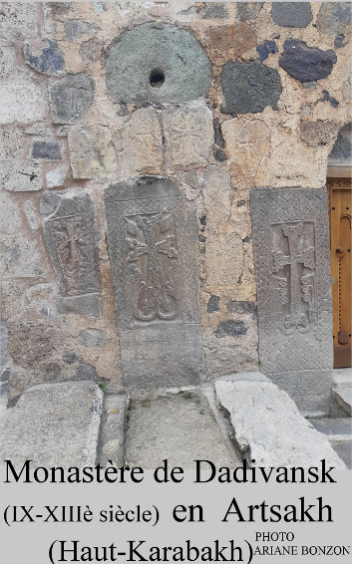There are three major questions at issue in the current Syrian tragedy. First, what has triggered this disaster ? Second, which phase are we currently facing ? Finally, what are the possible solutions ?
In 2011, the great hope of a relevant percentage of Syrians was clearly to join the Arab Spring : civil rights, democracy and freedom were no longer perceived as deferrable needs. Authentic, spontaneous and tendentially non-religious movements drove the regime of President Bashar al-Assad to react with violence, fearing a loss of power and possible retaliations against its ruling Alawite minority. This sparked a sectarian civil war : mass atrocities, mainly committed by Assad’s army against the local Sunni population, are a daily reality in present-day Syria. The recent massacre in Banias, a Sunni settlement amidst a region populated by Alawites, is just the last of a long list of similar cases.
Still, the ongoing deadly conflict cannot be fully understood simply in the context of contemporary history or, even less, resorting to possible religious explanations. It is noteworthy, in fact, that the Islamist component of the Syrian democratic wave started to sneak in only when the militarization of the revolution occurred.
The current transition into widespread chaos, indeed, represents the final stage of a process rooted in a distant past, as the mono-ethnic and mono-religious approach imposed on most of the Eastern Mediterranean area during the last decades of the nineteenth century and the end of the Second World War is nearing its final stage. In should be recalled that local realities in the region have been consistently multi-ethnic and multiracial. Against this backdrop, nationalism, as Elie Kedourie predicted five decades ago referring to the Middle East, “is artificially constructed either by imposition or imitation : its inevitable outcome is destruction, brutal murder and persecutions of minorities.”
This is not a suggestion to go back to a far past. The local populations, in fact, learned to accept symbols (the crescent moon, for example, did not hold any evocative religious meaning among Muslim believers ; it was utilized exclusively for decorative purposes and not only in the dār al-Islām), borders, and expressions that are now, in most cases, part of their way of living and thinking. It is, instead, a reminder that the quest for independence by countries like modern Syria took place in fulfillment of, rather than opposition to, the colonial process : “When the colonial powers were strained during the two world wars,” Tamim al-Barghouti noted in his book The Umma and the Dawla, “their Middle Eastern colonies got their formal independence and, because of the way they were structured and the elites that governed them, continued to behave as colonies”.
Too often, present-day Western powers tend to approach the Syrian crisis as something that, although dramatic, affects peoples and countries that are historically and politically detached from their past – but the past has implications for the current situation.
In a recent policy-brief on Al-Arabiya, Lebanese-British journalist Eyad Abu Shakra pointed out that “the international community has contributed to destroying Syria […]. Neither the Western powers nor Russia and China seem to be concerned about the Syrian tragedy.” Such views are open to debate, but it seems clear that too many external actors have interests in keeping the status quo. This is true not only for some of the above-mentioned countries, but also, and possibly especially, for the Arab states. Indeed, nearly all of them have sided with the rebel forces with the aim to topple Assad and inflict a blow to Iran’s key ally in the Arab world. These countries seek to weaken Assad’s regime, but they limit their support because they are not fully eager to see him replaced either. Meanwhile, the country is becoming more and more of a battlefield for regional rivalries with different actors committed to funding their local proxies.
In such a looming scenario, the Israeli airstrikes on Syria, carried out near the Damascus airport last week, have somehow shaken a bloody status quo. Although problematic, the step taken by the Israeli authorities is pushing the world powers closer to an international response to the conflict.
What are, then, the possible solutions ? There is no military solution to this conflict. The international conference announced a few days ago by US Secretary of State John Kerry and Russian Foreign Minister Sergey Lavrov is a first step in the right direction. In Bosnia, in a somehow similar scenario in the mid-1990s, such conference favored the conditions for the ending of that bloody conflict. The success of the Syrian conference, however, is based on two main preconditions. First, Washington has to persuade the Gulf States as well as Saudi Arabia to get the rebels, whom they are funding, to the table. Second, Moscow - quoting Council on Foreign Relations top Russia expert, Stephen Sestanovich - has to show the will to tell the Syrian authorities “that the jig is really up for their regime.”
Four additional main aspects should serve as the basis of any feasible strategy. First, the Syrian crisis cannot be solved with a deal between competing sectarian and ethnic interests : this would be just a reworked version of old-fashioned power balancing. Second, a sustainable peace cannot be achieved without deliberately engaging local women. Third, the international community has the urgency to have a clear picture of who is fighting for what in Syria. Last but not least, peace agreements can endure if major powers agree to serve as custodians of the peace process and if the international community is willing to invest resources, taking risks. This, again, is unlikely to occur until that very same international community will fully realize its own historical responsibilities in the current Syrian tragedy.

